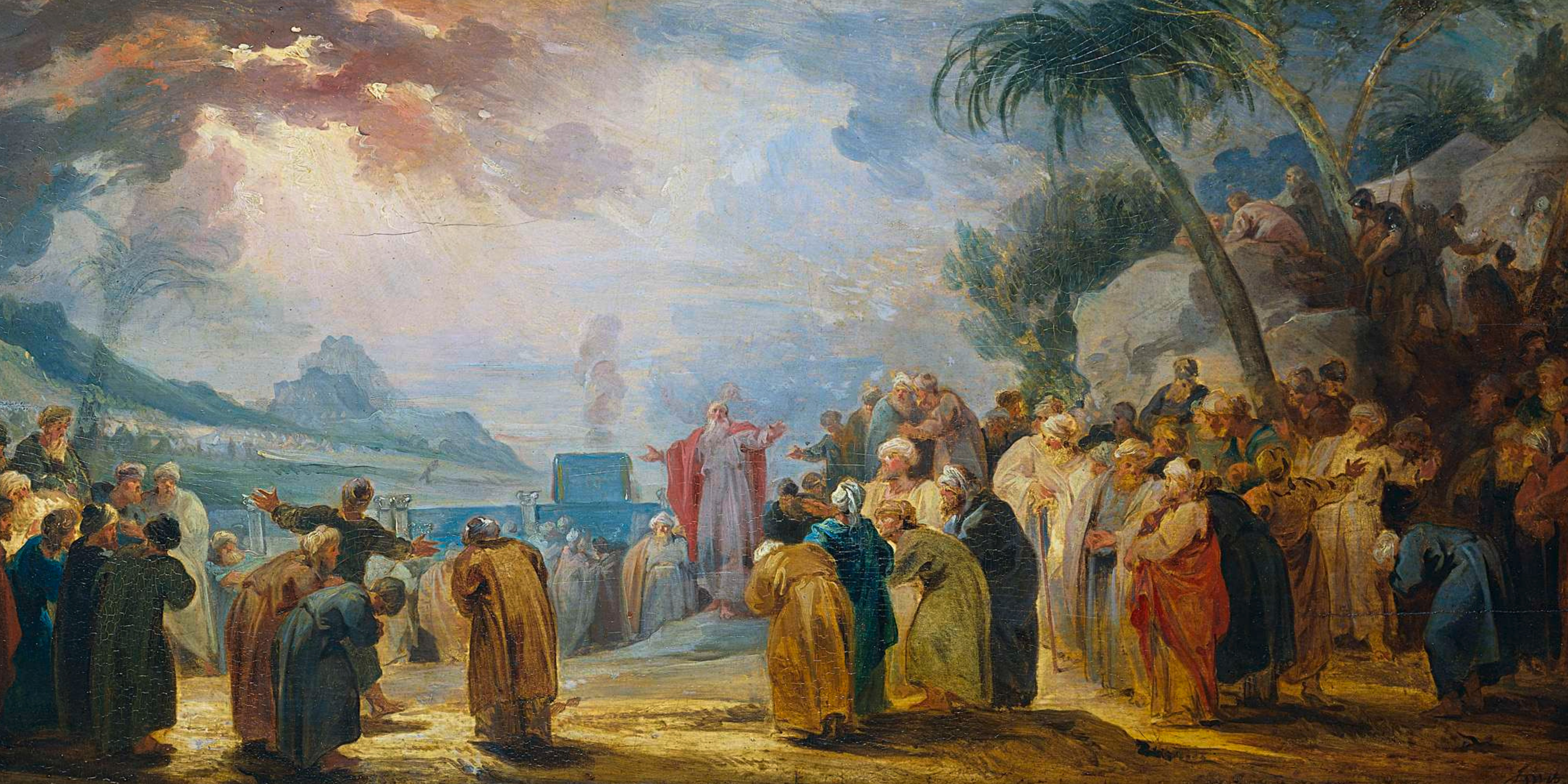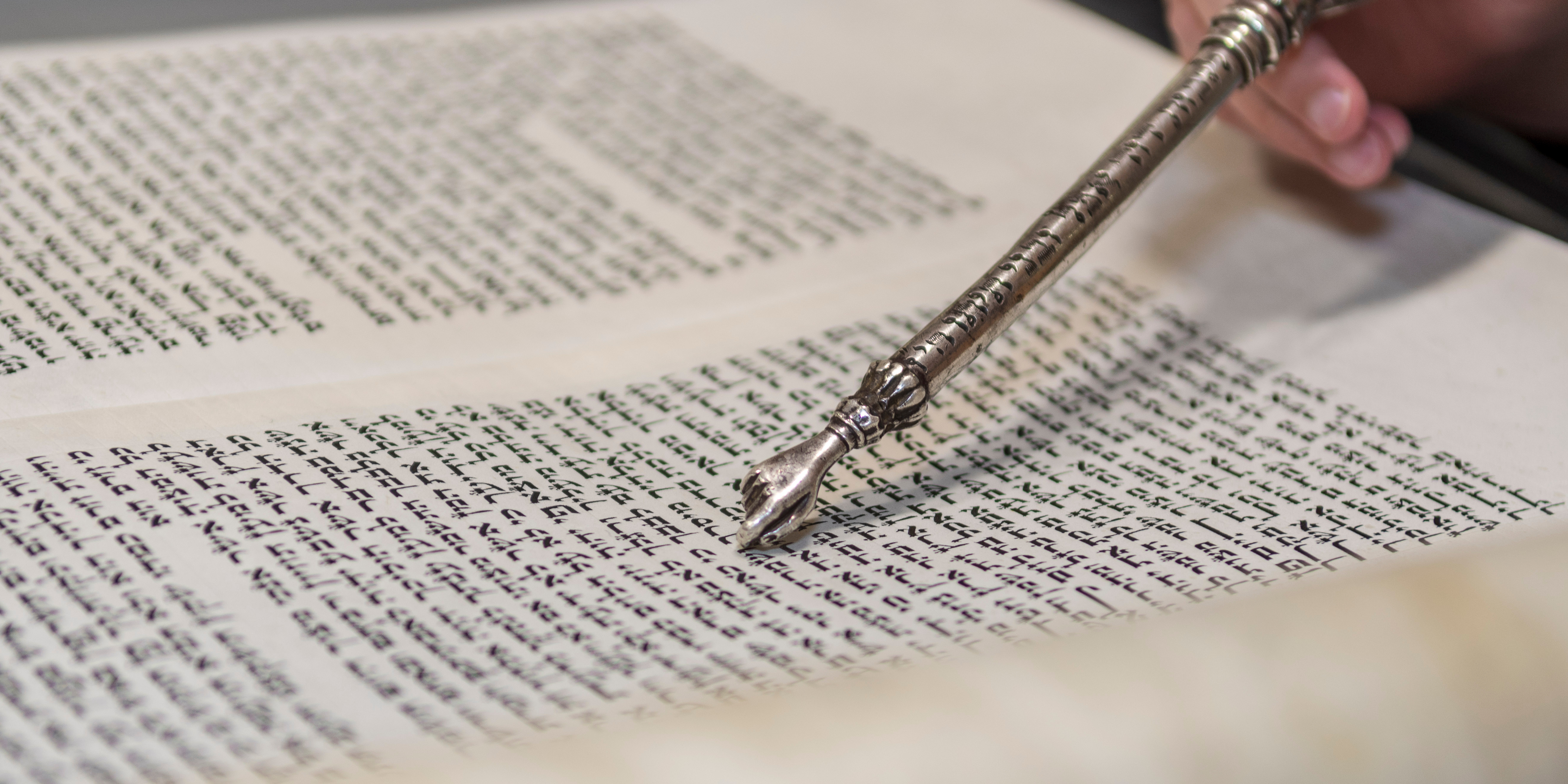Devarim

After forty years of wandering in the wilderness the Israelites arrive at their final encampment before entering the Land of Israel. This week’s parashah is D’varim, the first parashah of the Book of Deuteronomy. Moses begins his valedictory address: “On the other side of the Jordan, in the land of Moab, Moses undertook to expound this Teaching” (Deut. 1:5). Since the Torah’s revelation was recorded in the Book of Exodus, commentators have asked what Moses expounded and why he repeated the Torah’s teachings here. The Italian commentator Sforno (c. 1475–1550) explains that Moses begins by repeating the covenant that was concluded at Mount Horeb to remind the Israelites of their eternal relationship with God. The people assembled at the edge of the Jordan did not experience the revelation at Sinai themselves; they know of it only from the stories their parents told them.
Ibn Ezra (1089–c.1167) explains that now that the Exodus generation has passed, Moses is considered a trusted witness to the covenant at Sinai and expounds the Torah so their children will understand their parents’ experience of revelation. The purpose of Moses’ discourse is to equip the next generation with the tools for settling and building a just society in the Land of Israel. Despite their ignorance of the promised land, Moses’ final oration is an act of deep trust and faith in the wilderness generation’s capacity to build their future.
Perhaps since the days of the wilderness generation, parents and teachers have been apprehensive about their children’s stake in a Jewish future. In his essay, “Israel, The Ever-Dying People,” the Jewish Polish historian Simon Rawidowicz argued that since the Mishnah the Jewish people have had a foreboding sense that theirs was the last generation. This sense of apprehension has had a protective effect. Like Moses at the edge of the Jordan, over time community leaders have developed educational efforts and built communal organisations to ensure a vital Jewish future. Rawidowicz wrote in the 1950s: “Jewry has indulged so much in its fear of its end that its constant vision of the end helped it to overcome every crisis, to emerge from every threatening end as a living unit, though much wounded and reduced. In anticipating its end, it became its master. Thus no catastrophe could ever take this end-fearing people by surprise, so as to put off its balance, still less to obliterate it—as if its incessant preparation for the end made this very end absolutely impossible.”
Tonight begins the fast of Tisha b’Av, when we mourn the destruction of the Temples and the tragedies of the Jewish people. The fast enables Jews to mourn our past and in so doing express our inherent concerns about the future. Where Rawidowicz argues that our apprehension about the Jewish future leads to constructive communal activity, Tisha b’Av reminds us that it can just as easily lead to destructive acrimony. The Sages teach that the second Temple was destroyed because of sinat chinam, baseless hatred. Let us not forget that the toxic stew of inter-communal conflict can as easily be our undoing as those outside the Jewish community who seek to do us harm.
Rabbi Daniella Kolodny is a Masorti Rabbi, and a member of New North London Synagogue



